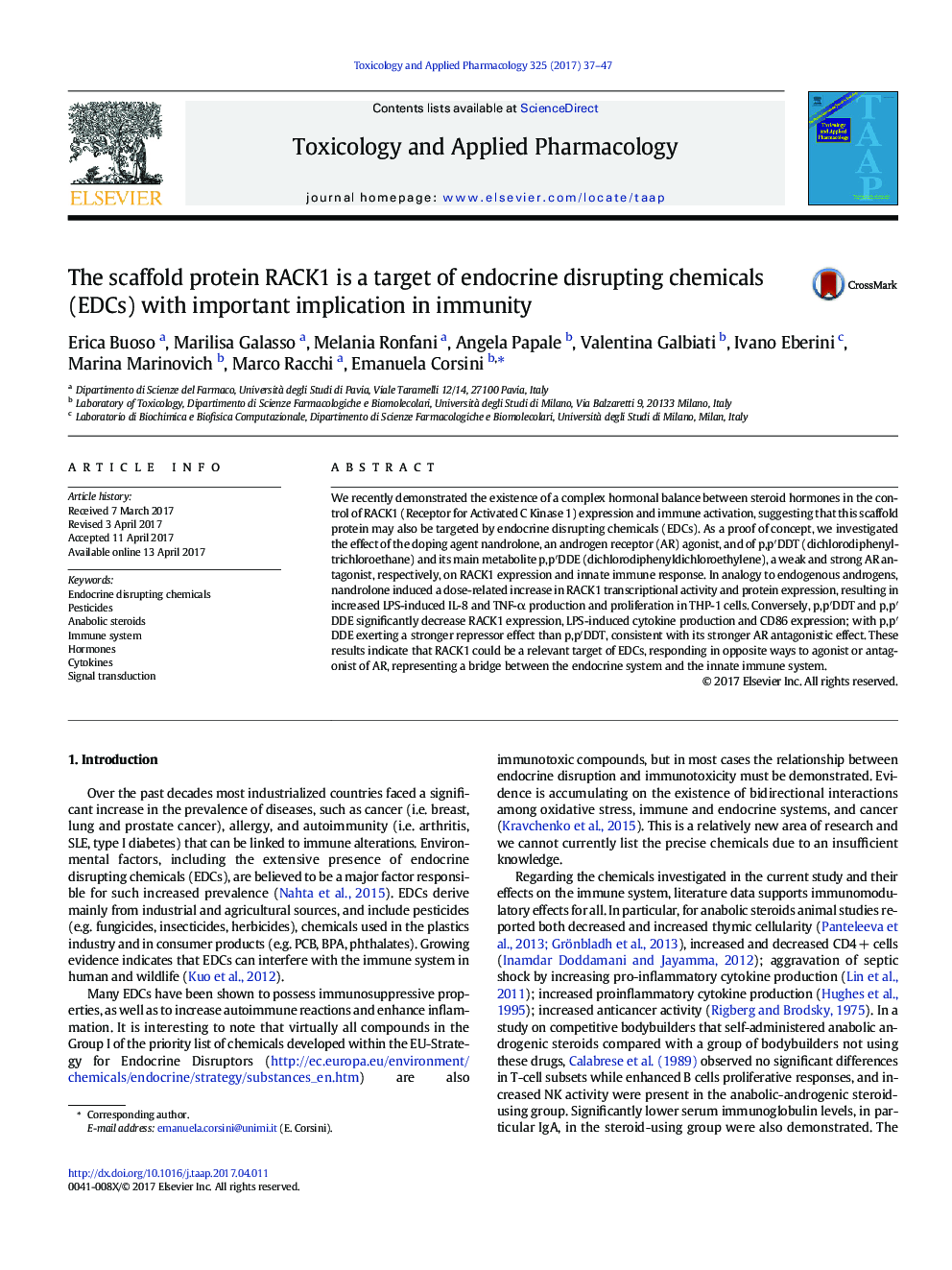| Article ID | Journal | Published Year | Pages | File Type |
|---|---|---|---|---|
| 5558581 | Toxicology and Applied Pharmacology | 2017 | 11 Pages |
â¢RACK1 expression can be induced by AR agonists with a consequent enhancement of the response to LPS.â¢RACK1 can be negatively modulated by the AR antagonists DDT and its main metabolite p,pâ²DDE.â¢RACK1 can be a relevant target of EDCs, representing a bridge between the endocrine system and the immune system.
We recently demonstrated the existence of a complex hormonal balance between steroid hormones in the control of RACK1 (Receptor for Activated C Kinase 1) expression and immune activation, suggesting that this scaffold protein may also be targeted by endocrine disrupting chemicals (EDCs). As a proof of concept, we investigated the effect of the doping agent nandrolone, an androgen receptor (AR) agonist, and of p,pâ²DDT (dichlorodiphenyltrichloroethane) and its main metabolite p,pâ²DDE (dichlorodiphenyldichloroethylene), a weak and strong AR antagonist, respectively, on RACK1 expression and innate immune response. In analogy to endogenous androgens, nandrolone induced a dose-related increase in RACK1 transcriptional activity and protein expression, resulting in increased LPS-induced IL-8 and TNF-α production and proliferation in THP-1 cells. Conversely, p,pâ²DDT and p,pâ²DDE significantly decrease RACK1 expression, LPS-induced cytokine production and CD86 expression; with p,pâ²DDE exerting a stronger repressor effect than p,pâ²DDT, consistent with its stronger AR antagonistic effect. These results indicate that RACK1 could be a relevant target of EDCs, responding in opposite ways to agonist or antagonist of AR, representing a bridge between the endocrine system and the innate immune system.
Graphical abstractDownload high-res image (56KB)Download full-size image
